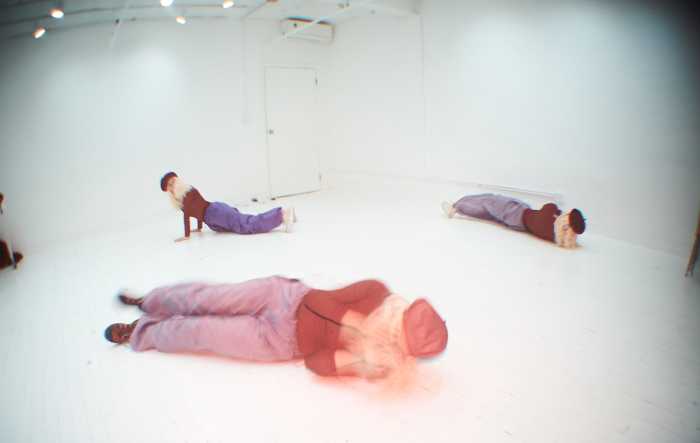By Daniel Arimborgo
With Mars at its closest distance to earth, something that only happens once every 10 years, now would be the perfect time for Martians to attack earth.
But some 70 years after the “War of the Worlds” CBS radio broadcast which shook the nation and after the countless comic books and movies depicting invasions from the Red Planet, we all know there aren't Little Green Men.
But what about large green flying squids?
A new exhibit which opened Saturday at the New York Hall of Science in Flushing Meadows Corona Park, “Aliens: Worlds of Possibilities” takes on that and other questions about SETI, the search for extra-terrestrial intelligence.
Fourth graders from Brooklyn's PS 13, let in for an early treat at a Thursday preview of the exhibit, gleefully skittered about the many displays.
The children first explored the dance floor-like Living Carpet, where shadows of the kids, captured by a special ceiling projector, were morphed into different alien images, including the requisite elongated limbs.
“I think the exhibit is great,” student Jeremy Gonzalez said. “I learned that there are different kinds of things in the universe.”
“This exhibit can be used with reading and essay tests,” Jeremy's teacher, Vanessa Dixon said.
“There's a lot of reading, which is what I like,” she said, adding, “I think it is wonderful and can help in all their curriculums.”
A cosmic passport invites kids to come up with alien creatures using guidelines outlined in the pamphlet.
Nearby, a turbulent planet globe contains liquids that are stratified because of their different densities, which mimic the gaseous atmospheres on giants like Jupiter and Saturn. Children can spin the globe which creates stormy swirls on the model planet.
“The exhibit is about alien worlds and the possibility of life on them,” Dr. Martin Weiss, director of science at the Hall of Science told Qguide. “There's a strong emphasis also on the planetary sciences,” he said, adding that the exhibit also gives children some idea of how scientists are going about looking for life.
“For instance, NASA is currently looking for other planets like earth,” he said.
Optimism to that end comes from the Drake equation. Radio astronomer Frank Drake came up with a formula in the early 1960s to calculate the likelihood of life on other planets based on the estimated number of stars in the known universe, the proportion of them that are likely to have planets orbiting them, and then the chances of any of those planets harboring intelligent life.
“The Drake equation gives you lots to think about in terms of what it would take to have life on other planets,” Weiss said.
A number-crunching display at the exhibit allows youngsters to study for themselves the likelihood of extraterrestrial life.
The show-stealers of the exhibit have to be the four 12 to 20-foot pneumatically actuated robotic aliens. The basic design for the creatures came from grade-school students in Seattle, who first came up with their characteristics based on guidelines for the types of planets they would live on. The aliens were then brought to life by Garner Holt Productions, a manufacturer of animatronic models in Los Angeles.
Phineous Palindrome, a 2-headed winged creature can literally watch its back, with an extra pair of eyes on its tail.
The Hairy Sandwalker looks like a cross between Warner Bothers' Tazmanian Devil and an enormous kiwi bird, with the a addition of one three-fingered arm with third eye at the end.
The clumping Rockettes, creatures who live on a rocky planet, are Oscar the Grouch-like beings who peek out of rock tubes.
The Gusty Traveler, a squid-like creature, sucks noxious gases for nourishment, and floats wherever strong winds carry it, expelling gas to change altitude.
“We are allowing children to make their own assessments as to whether aliens exist or not,” said Hall of Science spokeswoman Wendy Brez. “What's really great about this exhibit is it gives kids a chance to look at environments and see why some creatures would be adaptable to that environment.”
On a floor below, a remote-controlled Mars rover can be piloted by visitors, another exhibit shows how light on other planets would affect the colors we normally see, and there are hands-on models of optical and radio telescopes.
Aliens will occupy the Hall through Sept. 2. Call 718-699-0005.
Reach reporter Daniel Arimborgo by e-mail at timesledger@aol.com or call 229-0300 Ext. 141.

































